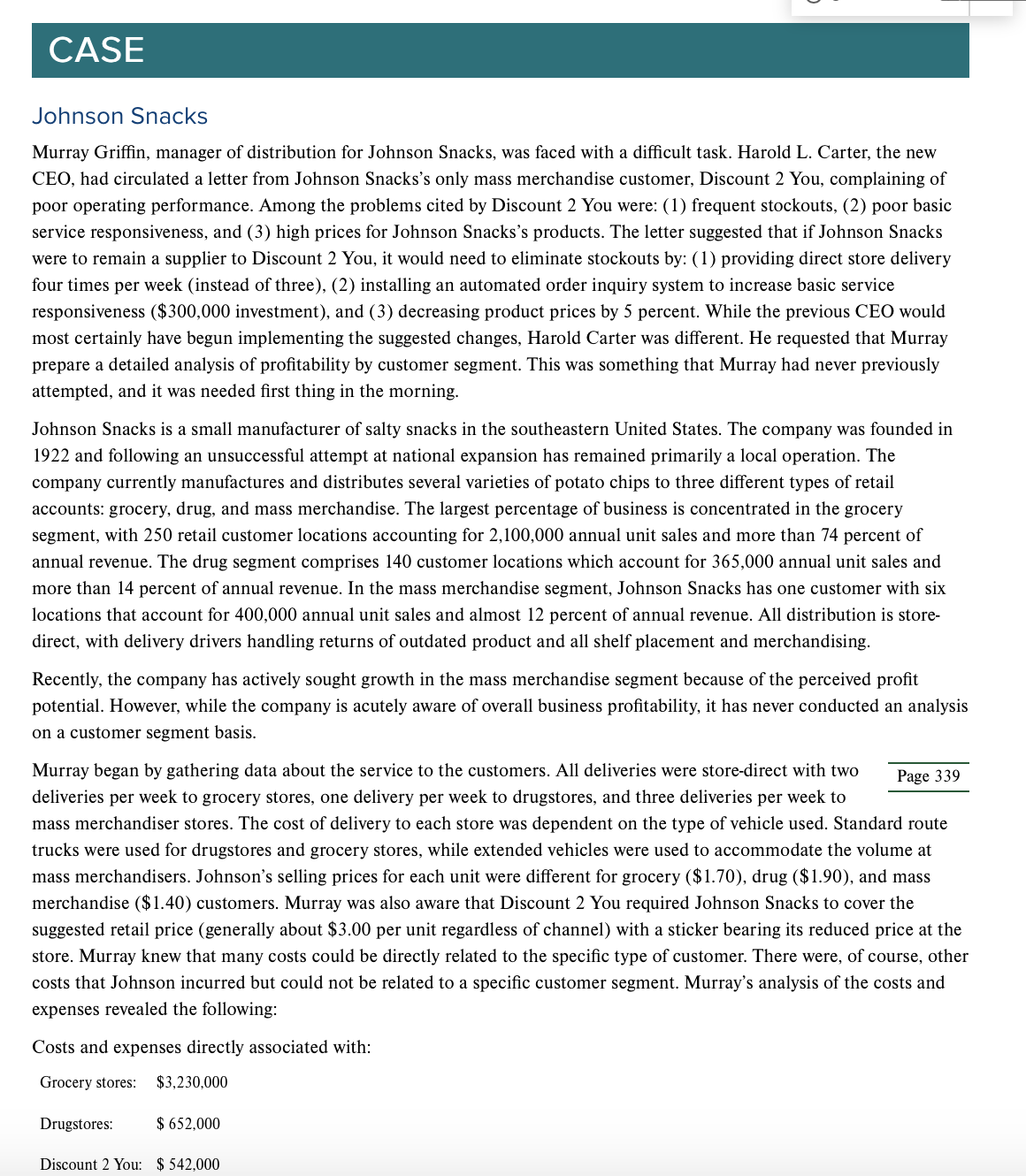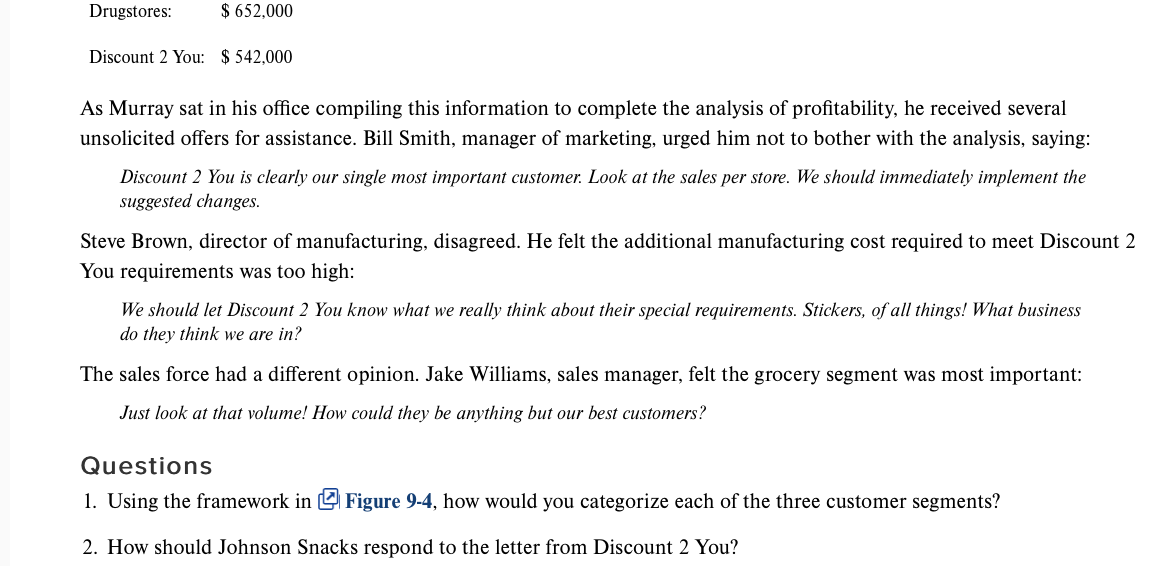This is the case study I need help with. Here are the questions I need help with:
- Break down Discount 2 You's requests. Tell us why we should or should not continue to do business with them anymore.
v CAS E Johnson Snacks Murray Grifn, manager of distribution for Johnson Snacks, was faced with a diicult task. Harold L. Carter, the new CEO, had circulated a letter from Johnson Snacks's only mass merchandise customer, Discount 2 You, complaining of poor operating performance. Among the problems cited by Discount 2 You were: (I) frequent stockouts, (2) poor basic service responsiveness, and (3) high prices for Johnson Snacks's products. The letter suggested that if Johnson Snacks were to remain a supplier to Discount 2 You, it would need to eliminate stockouts by: (1) providing direct store delivery four times per week (instead of three), (2) installing an automated order inquiry system to increase basic service responsiveness ($300,000 investment), and (3) decreasing product prices by 5 percent. While the previous CEO would most certainly have begun implementing the suggested changes, Harold Carter was different. He requested that Murray prepare a detailed analysis of protability by customer segment. This was something that Murray had never previously attempted, and it was needed rst thing in the morning. Johnson Snacks is a small manufacturer of salty snacks in the southeastern United States. The company was founded in 1922 and following an unsuccessful attempt at national expansion has remained primarily a local operation. The company currently manufactures and distributes several varieties of potato chips to three different types of retail accounts: grocery, drug, and mass merchandise. The largest percentage of business is concentrated in the grocery segment, with 250 retail customer locations accounting for 2,100,000 annual unit sales and more than 74 percent of annual revenue. The drug segment comprises 140 customer locations which account for 365,000 annual unit sales and more than 14 percent of annual revenue. In the mass merchandise segment, Johnson Snacks has one customer with six locations that account for 400,000 annual unit sales and almost 12 percent of annual revenue. All distribution is store- direct, with delivery drivers handling returns of outdated product and all shelf placement and merchandising. Recently, the company has actively sought growth in the mass merchandise segment because of the perceived prot potential. However, while the company is acutely aware of overall business protability, it has never conducted an analysis on a customer segment basis. Murray began by gathering data about the service to the customers. All deliveries were store-direct with two W deliveries per week to grocery stores, one delivery per week to drugstores, and three deliveries per week to mass merchandiser stores. The cost of delivery to each store was dependent on the type of vehicle used. Standard route trucks were used for drugstores and grocery stores, while extended vehicles were used to accommodate the volume at mass merchandisers. J ohnson's selling prices for each unit were different for grocery ($1.70). drug ($1.90). and mass merchandise ($1.40) customers. Murray was also aware that Discount 2 You required Johnson Snacks to cover the suggested retail price (generally about $3.00 per unit regardless of channel) with a sticker bearing its reduced price at the store. Murray knew that many costs could be directly related to the specic type of customer. There were, of course, other costs that Johnson incurred but could not be related to a specic customer segment. Murray's analysis of the costs and expenses revealed the following: Costs and expenses directly associated with: Grocery stores: $3,230,000 Drugstores: $ 652,000 Discount 2 You: $ 542,000 Drugstores: $ 652.000 Discount 2 You: $ 542.000 As Murray sat in his ofce compiling this information to complete the analysis of protability, he received several unsolicited offers for assistance. Bill Smith, manager of marketing, urged him not to bother with the analysis, saying: Discount 2 You is clearly our single most important customer. Look at the sales per store. We should immediately implement the suggested changes. Steve Brown, director of manufacturing, disagreed. He felt the additional manufacturing cost required to meet Discount 2 You requirements was too high: We should let Discount 2 You know what we really think about their special requirements. Stickers, ofall things!f What business do they think we are in? The sales force had a different opinion. Jake Williams, sales manager, felt the grocery segment was most important: Just look at that volume! How could they be anything but our best customers? Questions 1. Using the framework in La, Figure 9-4, how would you categorize each of the three customer segments? 2. How should Johnson Snacks respond to the letter from Discount 2 You








